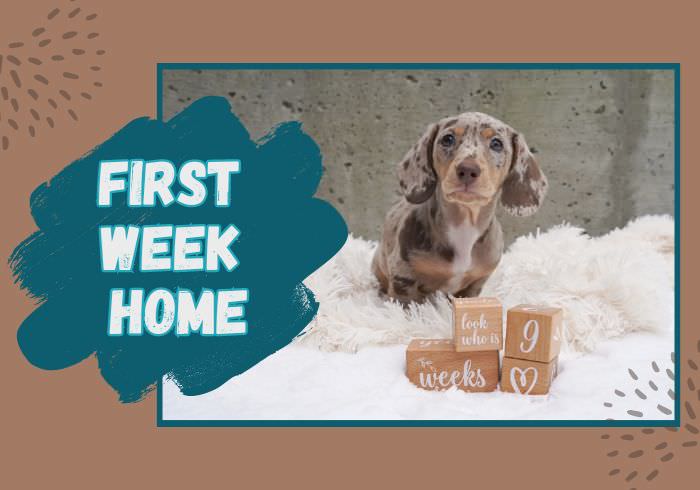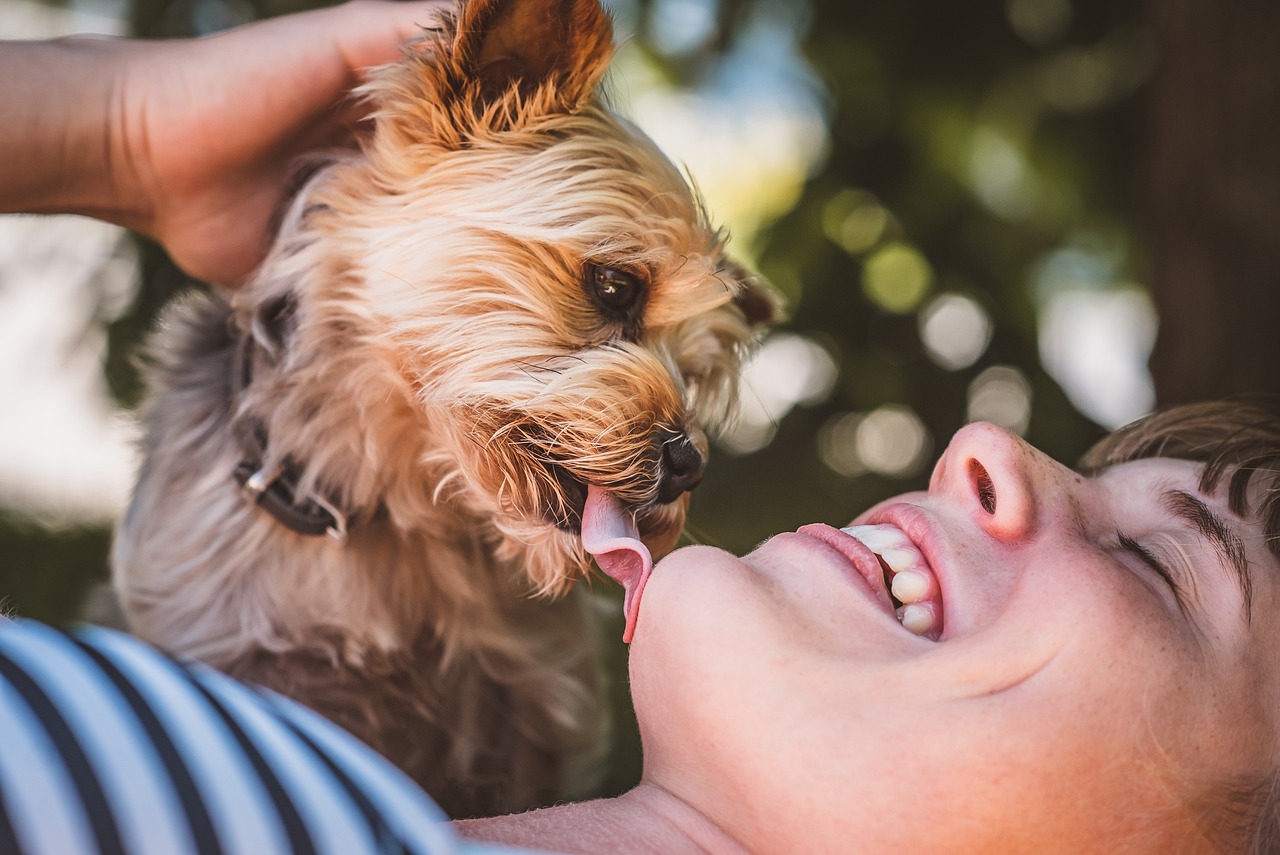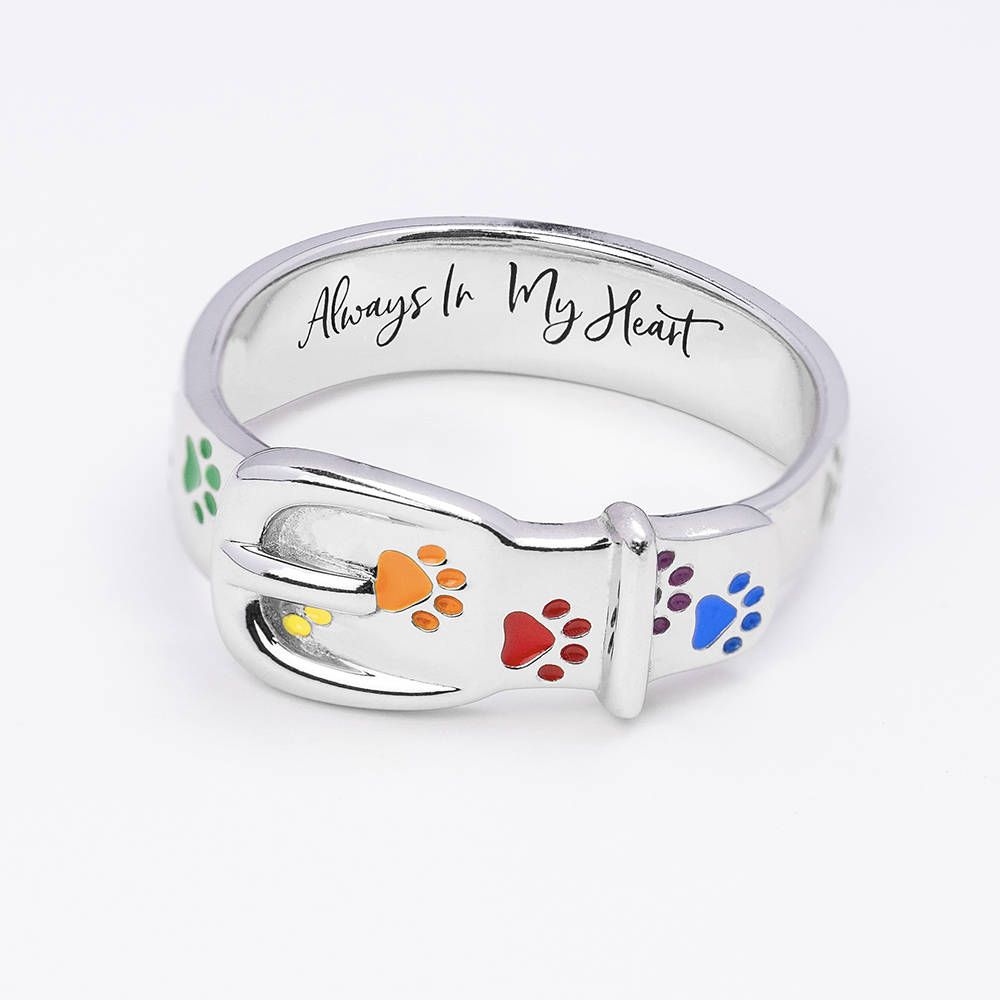As a seasoned dog owner, I’ve had the privilege of welcoming two Dachshund puppies into my life – Summit and now, the newest addition, Otter.
The first week with a new furry family member can be both exhilarating and challenging, but with the right approach, it can also be an incredibly rewarding experience.
I’m sharing my personal journey with my most recent puppy Otter, the lessons I’ve learned, and the tips I’ve gathered in hopes of making your own Dachshund puppy’s transition a smooth one.
Note: This blog post was edited from this video transcript, but it provides additional information and elaborations.
Navigating the Airport and Flight with a Puppy
Bringing Otter home from Kansas City to our home in Washington state involved a flight, which gave me a little anxiety.
He was small enough to ride in an approved airline dog carrier under the seat, but I wasn’t sure how his newly-formed ears would handle it and if he would bark and howl.
Otter proved to be a true champ throughout the journey though.
Despite a one-hour flight delay, which posed a potential potty training challenge, Otter managed to hold his bladder and bowels the entire time, not making a single mess in his crate.
I was impressed by his calm demeanor, as he only fussed a little during the landing, likely due to the air pressure changes.
I’ve flown with two of my other dogs before and learned that my fears were unfounded – they really impressed me – but, still, I get a bit nervous every time I fly with a new dog.
Employing these tips for flying with a dog really helped.
Introducing My Puppy to My Pack
One of the biggest worries people seem to have is introducing their puppy to the established pets in the house.
In my case, since I dogsit and my Dachshunds are used to accepting a rotating cast of characters, I took a more relaxed approach.
If a dog has been an only dog for years and is used to being the center of attention, introductions can be more delicate.
In both cases, in my experience, I think it’s best to just bring the puppy into the house without a big fuss.
The difference will be how closely you need to supervise the older dog and the puppy, as well as how long it may take your established pets to accept him or her.
Instead of the traditional neutral territory introduction, I simply brought Otter into our home and let the dogs sniff and get acquainted at their own pace.
Brodie, one of the dog sitting clients who was with us and was going to be for another few weeks, took on the role of Otter’s playful companion.
Brodie’s gentle nature and Otter’s eagerness to explore resulted in a budding friendship that warmed my heart.
However, not all of the pack members were as welcoming. Gretel, my 14-year-old senior Dachshund, maintained a neutral stance, tolerating Otter’s occasional attempts at cuddling but gently correcting him when he was too pushy.
Summit, my five-year-old, moody Dachshund was a bit more challenging.
There were a few resource-guarding incidents where she snapped at Otter over food.
This is an area we are actively working on, as I strive to ensure a harmonious and safe environment for all my furry family members.
Note: Otter has been with us for 5 months now and all of the dogs know their place and get along well.
Potty Training and Early Training Efforts
Potty training is always a top priority for me when welcoming a new puppy, and Otter has been doing remarkably well.
As a work-from-home dog mom, I was able to take him out frequently, and strictly follow my proven potty training protocol.
He quickly learned to go potty outside.
The only hiccup we encountered was a single incident where Otter refused to go outside and then immediately relieved himself indoors.
It just served as a reminder for me that consistency and patience are key when it comes to potty training.
I didn’t get mad at him, just calmly cleaned up the mess with a paper towel (no cleaner at first), and placed it outside so he could smell himself the next time we went out.
Five Tips for a Smooth Puppy Transition
Based on my experiences with two puppies – Summit and now Otter – I’ve compiled five essential tips to help make the first week with a new Dachshund puppy a success:
1) Consider Your Puppy’s Sleeping Arrangements
The decision of whether to allow your Dachshund puppy to sleep in your bed from the start or to crate train them can have a significant impact on their attachment and separation anxiety.
While I chose to have both puppies to sleep with me from day one, that may not be the best approach for everyone.
If you think you may want your puppy to eventually sleep in a crate, it’s important to start crate training early to avoid difficulties down the line.
In fact, Otter’s breeder instructed me to have Otter sleep in his crate at night for the first 6 months.
I questioned this and she said I could do what I wanted, but she suggests this so that a dog first learns to sleep alone in a crate in case you ever need them to do it again after allowing them into your bed.
Needless to say, I didn’t listen. But looking back, it probably was a good tip.
Summit will go sleep in her crate on her own sometimes, and I admit it is nice to have a dog that is ok sleeping away from me.
I can feel more comfortable if she needs to be in a crate if she suffers a back injury and has to go through a crate rest period.
2) Start Teaching Your Puppy to Be Alone Right Away
Puppies are super cute. They’re babies that depend on us and can be very unsettled because they’ve just left their mom and the only word that they knew.
However, there is a balance between providing comfort and stability and coddling to the point your puppy develops hyper-attachment.
I immediately started teaching Otter that he wouldn’t die if I wasn’t right there.
I primarily did this by putting him in his pen/crate with a natural chew, lick mat, or food dispensing toy to keep him busy while I took a shower or washed some dishes.
I tried to come back before he was finished and started to fuss.
During the first week, that didn’t give me much time away, but I plan to extend that amount of time as he feels more secure.
3) Don’t Strive for Perfection
Raising a puppy is a learning experience, and it’s important to be kind to yourself. Resist the urge to try and do everything perfectly from the start.
During the first week (and even the first 3 months), I decided to focus on the essentials like teaching Otter his name, potty training, socialization and confidence building, and bonding with him.
A dog can learn obedience and tricks at any age, but if you miss the critical socialization and bonding window, you will have to work at least twice as hard to achieve it later…. And you may never get to where you could have been if you had started from day 1.
When it is time to start working on obedience, the first things I will teach him are sit, on your mat (place), leave it, and come to me when I call.
4) Establish a Routine
You’re probably heard this advice over and over for a Dachshund puppy – you must establish a routine right away because dogs like predictability.
While I’ve generally agreed with this belief, something about it didn’t sit quite right with me. Especially because our life is anything but routine, yet my dogs were thriving.
In fact, I think my Dachshunds are calmer and handle change better precisely because I don’t follow a routine.
But then it hit me – I think it’s possible to have routine even in a life that is chaotic and always changing.
To me, I like to think of routine as a loose schedule. Some level of predictability is necessary. And boy, there are certain things my Dachshunds sure won’t let me forget!
Two things that I consider a predictable routine are:
- The weenies eat twice a day, generally around 7:30 am and 4:30 pm.
- The dogs always sleep with me (or a person), no matter what time that is or where we happen to be.
I also consider “routine” to be a cause and effect behavior… when I do A, I want my dogs to do B.
I work from home, so an example of this would be that when I sit at my desk, no matter what time of day that it is, I want the dogs to settle and perhaps go to sleep.
To me, establishing a routine is more about setting expectations and trying to stay as consistent with those as possible, rather than having a structured time schedule for everything (although if that is your jam, that is ok too).
5) Teach Your Puppy to Settle
Once, when I was lamenting that I couldn’t get any work done with my puppy Summit in the house, a dog trainer in my mastermind group offered this advice:
“One of the most important jobs as a pet owner is to teach your dog the routine of the house. Most importantly, you need to teach them when it’s time to play and be active, and when it’s time to settle or entertain themselves (with something safe).”
A lightbulb went off in my head. What?? I actually do that? This concept was an absolute game-changer for me.
Teaching my puppies to settle has allowed me to maintain my own productivity while still providing him with the attention and care he needs.
My older dogs already knew this routine, but Otter was having a hard time catching on, even when Summit snarked at him for disrupting her beauty sleep.
I put Otter’s crate near my desk and closed him inside with a natural chew when I sat in my chair and he started to catch on pretty quickly.
Final Thoughts
Welcoming a new Dachshund puppy into your life is a truly special experience, but it’s also a significant undertaking.
By learning from my own journey and implementing these tips, I’m confident that you can navigate the first week with your new furry friend with greater ease and confidence.
Remember, every puppy is unique, and the key is to be adaptable, patient, and willing to learn alongside your new companion.
Enjoy this special time, and check out other articles on my blog for more tips.




